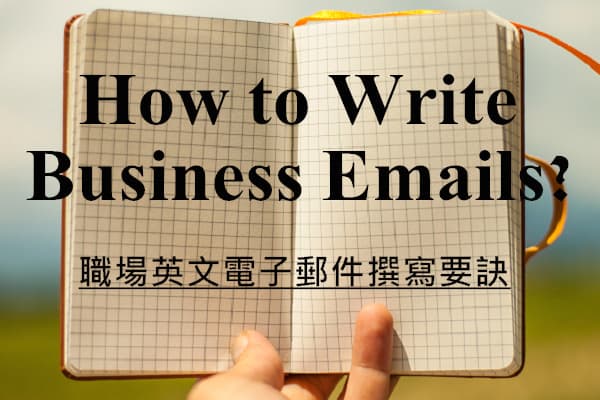職場英文電子郵件撰寫要訣

How to Write Business Emails
在職場中以Emails英文電子郵件進行往返聯絡與溝通,是許多人每天必須進行的工作。要如何確保你撰寫的英文電子郵件內容清楚易懂、進而順利地被閱讀、並促使對方採取後續回應呢?就讓我們一起來看看以下的重要訣竅與實用句型吧!
1. 信件主旨務必簡短且精確
Avoid saying too much in the subject header, but make sure it reflects the content of your Email to a person
unfamiliar with you. If possible, include a keyword that will make the Email content easier to remember and/or
search for in a crowded inbox.
For example, “
Meeting regarding the damaged escalator on May 12th” is specific enough that the email topic won’t be
mistaken for anything else but not so specific as to be distracting (ex. “Schedule, Guest List, Lunch Requests,
and Meeting Overview for May 12th"). The professionals may receive hundreds or more emails per day, the more
specific and appealing the subject is, the easier it will be to connect it with one's personal work.
2. 保持信件內容簡短扼要
People are busy, and they do not want to spend much time reading work emails. Make your emails as short as they
can be while still providing all the details necessary. Your sentences should be short and to the point.
Before sending your email, read over it and eliminate any irrelevant information. Generally, if you have
provided excess or off-topic information, delete it.
3. 清楚說明你期待什麼回應或行動
Do not make the reader guess that you are asking for a decision, or advice, a referral, or a purchase. Ask for
directly and unequivocally for what it is that you want, need or expect! Asking clearly is especially important
if you are sending to multiple people. And, make sure to call out the name of the specific person you need
to make the decision. For example: "
Elizabeth: Would you prefer I go down path A or path B here?"
Alternatively, if your email is only informing someone of something rather than asking for an action, clearly
label the email as "FYI" in the subject or in first sentence.
4. 信件開頭與結尾的正式寫法
- Depending on your relationship with the recipient, you may want use formal openings and closings. The following
provide some direction and an array of choices.
- Begin your email with a greeting. The greeting should be concise and formal. You may or may not choose to address a person specifically by name, depending on the context of the message. A message to another business or to an unspecified person does not require a name. Some examples of greetings are:
- End the email with a closing. An appropriate closing is polite and signals that the email has come to an end. While the closing of an email may not bear a common letter closing such as “Best Wishes” or “Sincerely,” it is considered a "best practice" to provide a closing to your email. Some potential closings:
Good afternoon,
Greetings,
Dear Dr. Smith,
Mrs. Campbell,
I look forward to your response,
hope to hear from you soon,
Thank you for your time,
5. 寄出信件之前務必校對一次
Do your best to ensure that your email does not include grammar or spelling mistakes and uses standard punctuation.
Many email programs include a spell check option; if your email has one, use it! Poor grammar almost certainly
will undermine the message that you are sending, so, if possible use an grammar checker.
If you are sending an email to a large number of people or if the email is particularly important, you may
want to have someone (or several individuals) proofread it before you send it.
推薦課程 商用英文書信班
